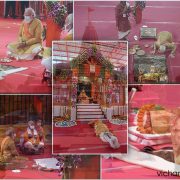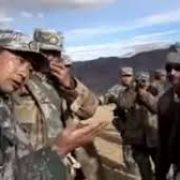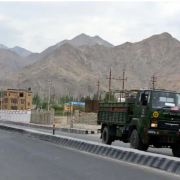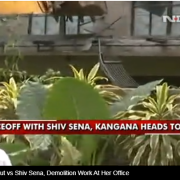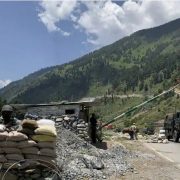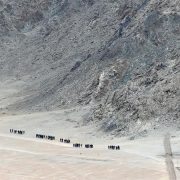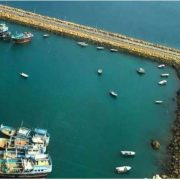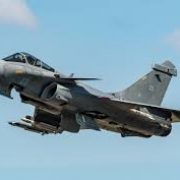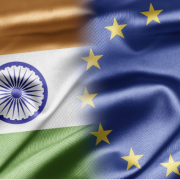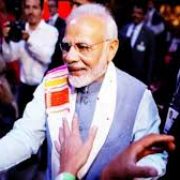4km buffers at three key points as troops of both countries pull back from Ladakh clash site

The Indian Army has began a rigourous verification procedure to display the withdrawal of the Chinese People’s Liberation Army (PLA) from friction points along the Line of Actual Control (LAC) in jap Ladakh while a complex disengagement plan moved forward in Hot Springs and Gogra, where the two armies are working to create a 4km buffers at three key points zone between troops within a 24-hour time frame, four officials acquainted with the developments stated on Tuesday evening while troops pulls back.
The PLA has withdrawn up to 2km from Patrolling Point 15 (Hot Springs) and a similar retreat is predicted to be finished at PP-17 (Gogra) by means of Wednesday evening, with the Indian Army pulling returned proportionately. This is based on an information reached closing week with the aid of pinnacle Indian and Chinese military commanders on a phased de-escalation of the continuing border war in the Ladakh theatre, said one of the officials noted above, who spoke at the circumstance of anonymity.
The armies have already created a 4km buffer quarter in Galwan Valley, the website of a deadly clash which left 20 Indian and an unconfirmed variety of Chinese soldiers lifeless on June 15, stated a 2d official.
The creation of buffer zones will temporarily restriction the patrolling sports of each armies inside the region. While some experts noticed this as a vital step, others advised that the brief curbing of patrolling rights should not become a long-term function undermining Indian presence and control.
Sources suggested on Tuesday that the PLA had withdrawn as much as 1.5 km from friction regions in Galwan Valley, Hot Springs and Gogra, and the Indian Army also pulled returned proportionately. A minor thinning of PLA squaddies has been noticed at the sensitive Finger Area near Pangong Tso.
Satellite images on Tuesday appeared to affirm the PLA pullback from Galwan Valley. “The photos actually imply that the PLA has moved returned in Galwan Valley. It’s a fantastic step but regular verification and strict vigil are a must,” stated Lieutenant General Vinod Bhatia (retd), a former director widespread of navy operations. Bhatia reviewed the pictures for HT.
Satellite snap shots from June 28 and July 6 released on Tuesday by means of Maxar, a US-based totally satellite imagery company, display the Chinese growth at the Galwan Valley in jap Ladakh has been removed as part of the disengagement procedure.
Satellite photographs from June 28 and July 6 released on Tuesday by way of Maxar, a US-based totally satellite imagery company, show the Chinese expansion on the Galwan Valley in eastern Ladakh has been eliminated as part of the disengagement procedure. ( Maxar/AP Photo )
The disengagement effort involves rival troops pulling again a distinct distance from face-off sites, with further retreat taking area in stages as the complicated plan progresses on a verifiable foundation on the ground each 72 hours through both sides. It also includes the phased withdrawal of weapons and system to a collectively agreed distance, and finally the healing of popularity quo ante (the situation because it existed in early April).
“The army is retaining a close watch on the continued pull again by means of the PLA. It’s extremely important to affirm and reverify each degree of the disengagement process to avoid surprises,” stated the second one official, who asked not to be identified.
The verification method launched with the aid of the navy includes unmanned aerial vehicles, other aerial means of surveillance and satellite tv for pc imagery of the areas, stated a 3rd official.
The Indian Air Force (IAF) is already projecting its talents of sporting out day-and-night, all-weather combat missions in Ladakh, with front-line fighter jets, assault helicopters, and multi-task choppers getting airborne for annoying night-time missions from a ahead airbase inside the area, people acquainted with the matter stated on Tuesday.
On the creation of buffer zones, and the curtailment of patrolling, experts had a blended response.
“The zones of separation will dispose of the opportunity of violent face-offs. It’s first-rate to avoid any form of contact among rival troops. A moratorium on patrolling the regions through both sides till matters stabilise ought to help,” stated former Northern Army commander Lieutenant General DS Hooda (retd).
Disengagement in the course of a 2014 border standoff at Chumar in Ladakh worried a brief ban on Indian and Chinese squaddies patrolling disputed areas.
Satisfactory development of disengagement in Galwan Valley, Hot Springs and Gogra may want to set the level for lowering tensions in the Finger Area and additionally turn the focal point on the Depsang plains wherein the PLA’s forward presence is hindering the Indian Army’s patrolling patterns, stated Hooda.
But others sounded a greater cautionary note, emphasising that India need to have the ability to — after the agreed period — exercise its patrolling rights again. A senior official stated India have to never lose track of China’s “salami slicing” procedures to slowly clutch territory. “Salami slicing” refers to a string of small, clandestine operations supposed to reap a larger goal that would be hard to perform in one go. He stated, “We have to make certain that the buffer zones do no longer turn out to be a new repute quo. These can only be a brief degree to facilitate the disengagement manner to repair repute quo ante. The military will fully exercising patrolling rights in the location once that happens.”
Before the PLA occupied vantage positions on Finger Four in early May, Indian Army squaddies could patrol proper as much as Finger Eight, which New Delhi considers to be its territory. The new Chinese positions have confined the scope of Indian patrols. Fingers Four and Eight are 8km apart.
The navy is also keeping a strict vigil along the contested border in the Depsang sector in which a 2013 Chinese intrusion blocked the get right of entry to of Indian infantrymen to numerous patrolling routes, which include the ones main to Patrol Points 10, 11, 11A, 12 and 13, a fourth official stated.
The army buildup in Indian and Chinese depth areas, however, hasn’t thinned, with both sides keeping their protect up. The deployment of lots of squaddies, fighter jets, helicopters, tanks, artillery guns, missile structures and air defence guns continues in the region.
The disengagement technique, a precursor to any form of de-escalation of the border war, has started under the terms jointly agreed to at the June 30 meeting between delegations led with the aid of Lieutenant General Harinder Singh, commander of the Leh-primarily based 14 Corps, and Major General Liu Lin, commander of the South Xinjiang navy region. This understanding, in turn, became the result of earlier efforts no longer paying dividends.









